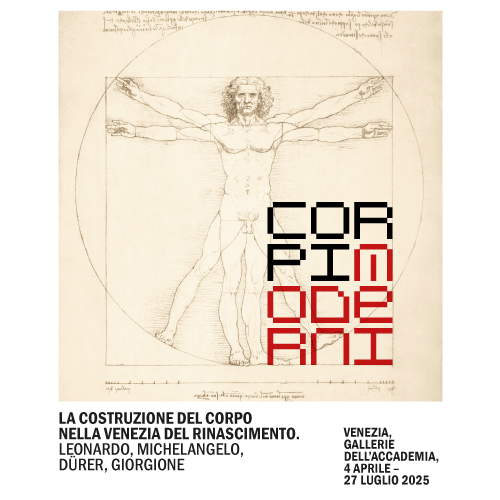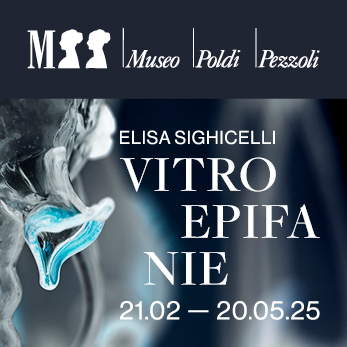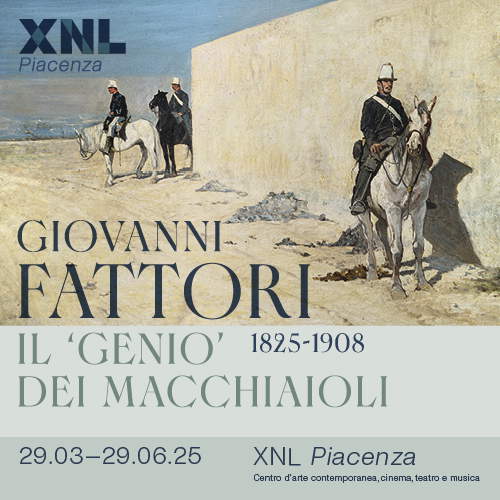Louvre holds major exhibition on Cimabue with many masterpieces
In Paris, the Louvre opens its doors to a major exhibition dedicated to Cimabue, a key figure in the history of Western painting. Scheduled to run from Jan. 22 to May 12, 2025, the exhibition is curated by Thomas Bohl and tells the story of how between 1280 and 1290, the Florentine artist marked a momentous turning point, breaking with Byzantine tradition and introducing a more natural representation of the world, objects and bodies. The exhibition itinerary stems from two pivotal events: the restoration of the Maestà, often referred to as the birthright of Western painting, and the acquisition in 2023 of the Derision of Christ, a panel discovered in France in 2019 and recognized as a national treasure.
These two paintings restored in 2024 form the centerpiece of the exhibition, which brings together some 40 works to illustrate Cimabue’s extraordinary innovation. The Florentine artist revolutionized pictorial language by abandoning rigid Byzantine iconographic conventions to experiment with a new spatial depth, softer modeling of figures, and a more engaging visual narrative. Until then, sacred images were painted according to traditional patterns, with stylized figures lacking anatomical realism. Cimabue, on the other hand, sought to give three-dimensionality to bodies and an intensity of expression never seen before, paving the way for Giotto and Duccio.
The exhibition traces the artistic context in which Cimabue worked, between Florence, Pisa and Assisi in the second half of the 13th century. At that time, art was still heavily influenced by Byzantine icons, which were considered sacred images produced without human intervention. Giunta Pisano’s Cross of San Ranierino and the Kahn Madonna are emblematic examples, with stylized figures and idealized proportions. Cimabue broke with this tradition by introducing illusionistic elements and a more dynamic narrative approach.
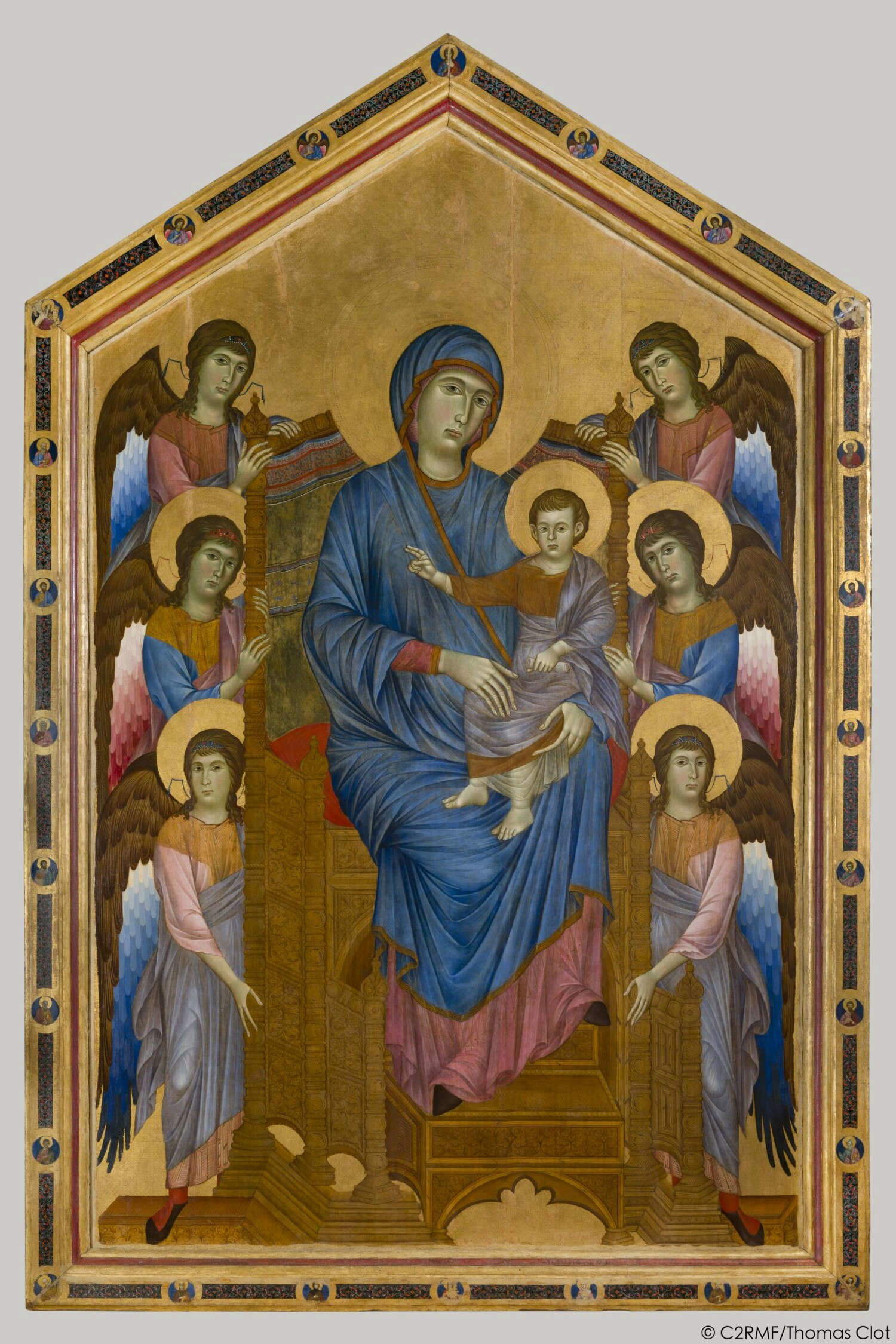
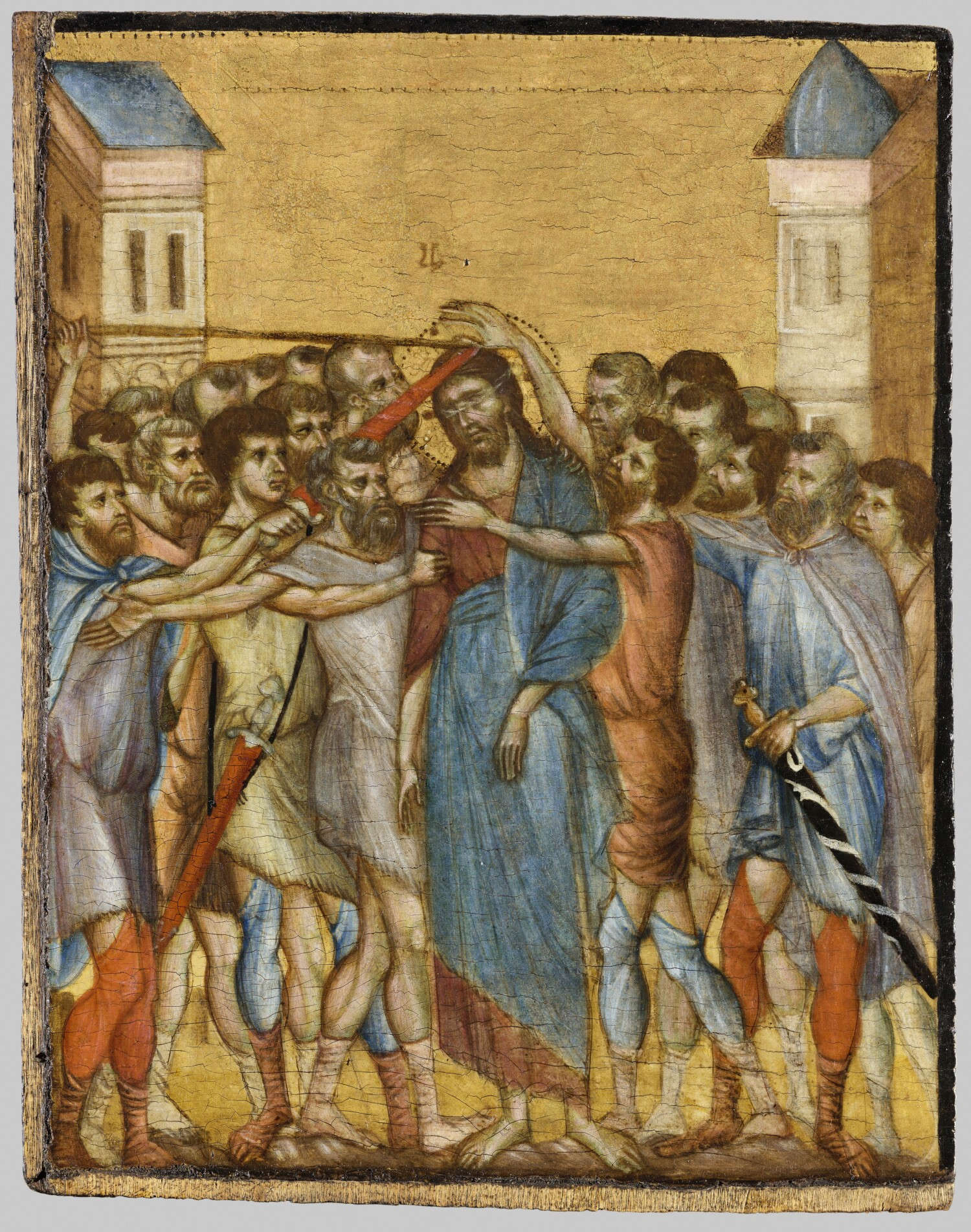
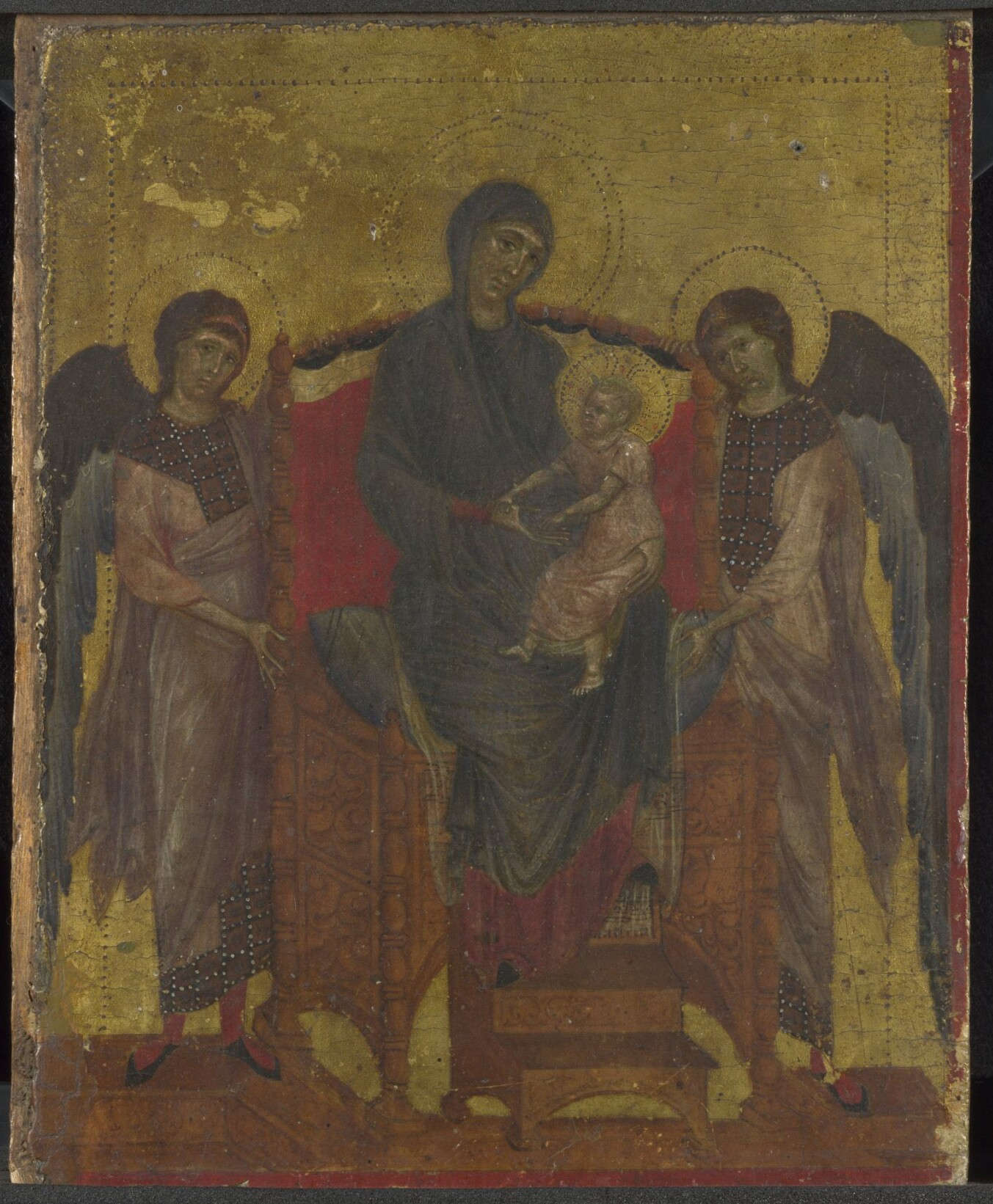
The heart of the exhibition is the Louvre’s Majesty, a monumental work that testifies to Cimabue’s desire to humanize sacred figures. The painting shows the Madonna on a throne seen from an innovative perspective angle, while restoration has revealed hidden details, such as the brilliance of the lapis lazuli pigments and Eastern artistic influences. The frame decorated with pseudo-Arabian motifs and the fabric of the throne suggest a dialogue between Western and Byzantine and Islamic art.
Another central theme of the exhibition concerns Cimabue’s workshop and its influence on later masters. Although there are no certain documents, Cimabue is believed to have been Giotto’s master and to have influenced Duccio di Buoninsegna. Comparison between Duccio’s Madonna di Crevole and Cimabue’s “Maestà” highlights similarities in the modeling of faces and the use of light to create transparencies. With Cimabue, art becomes a field of continuous experimentation, where stylistic research and innovation take center stage.
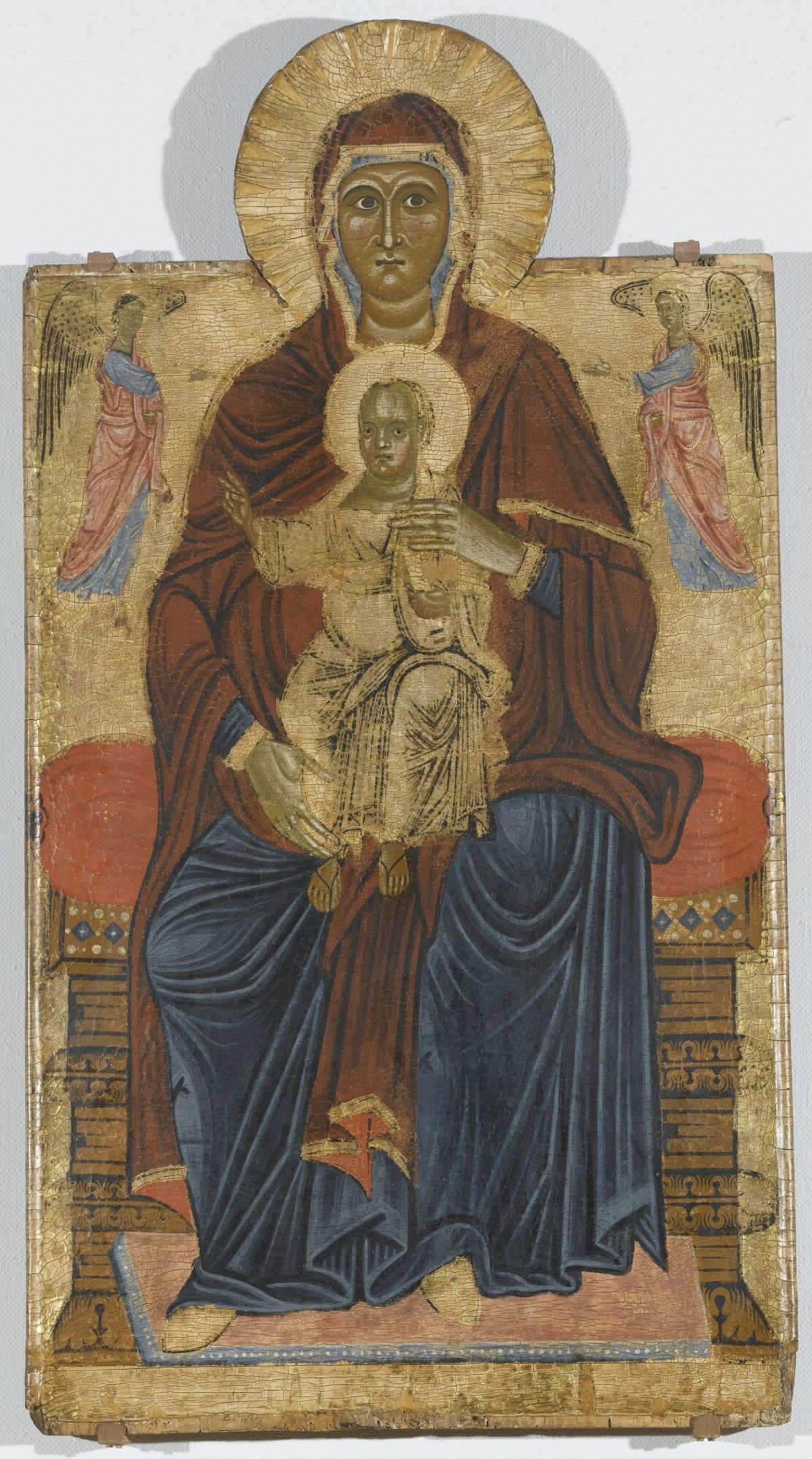
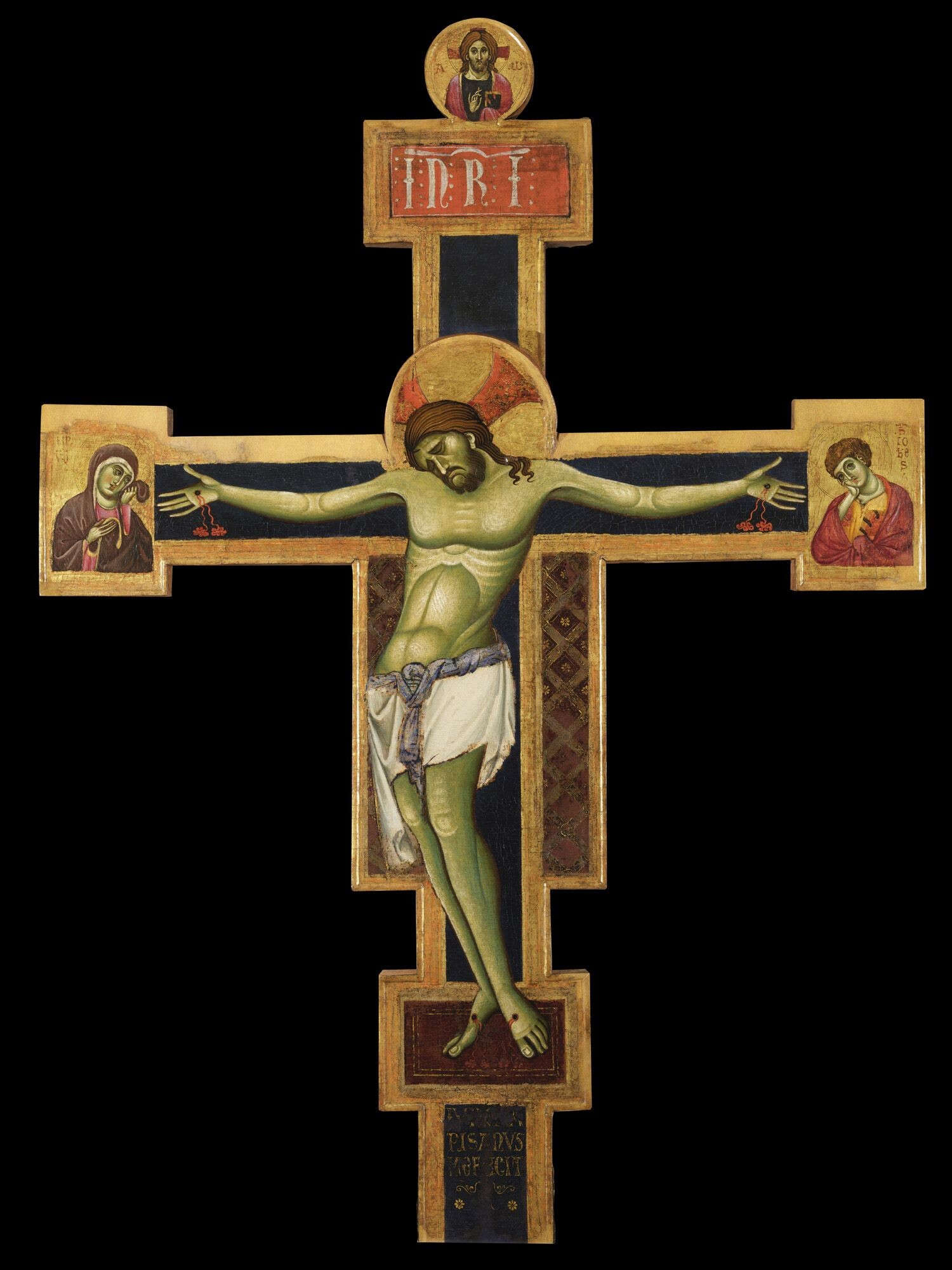
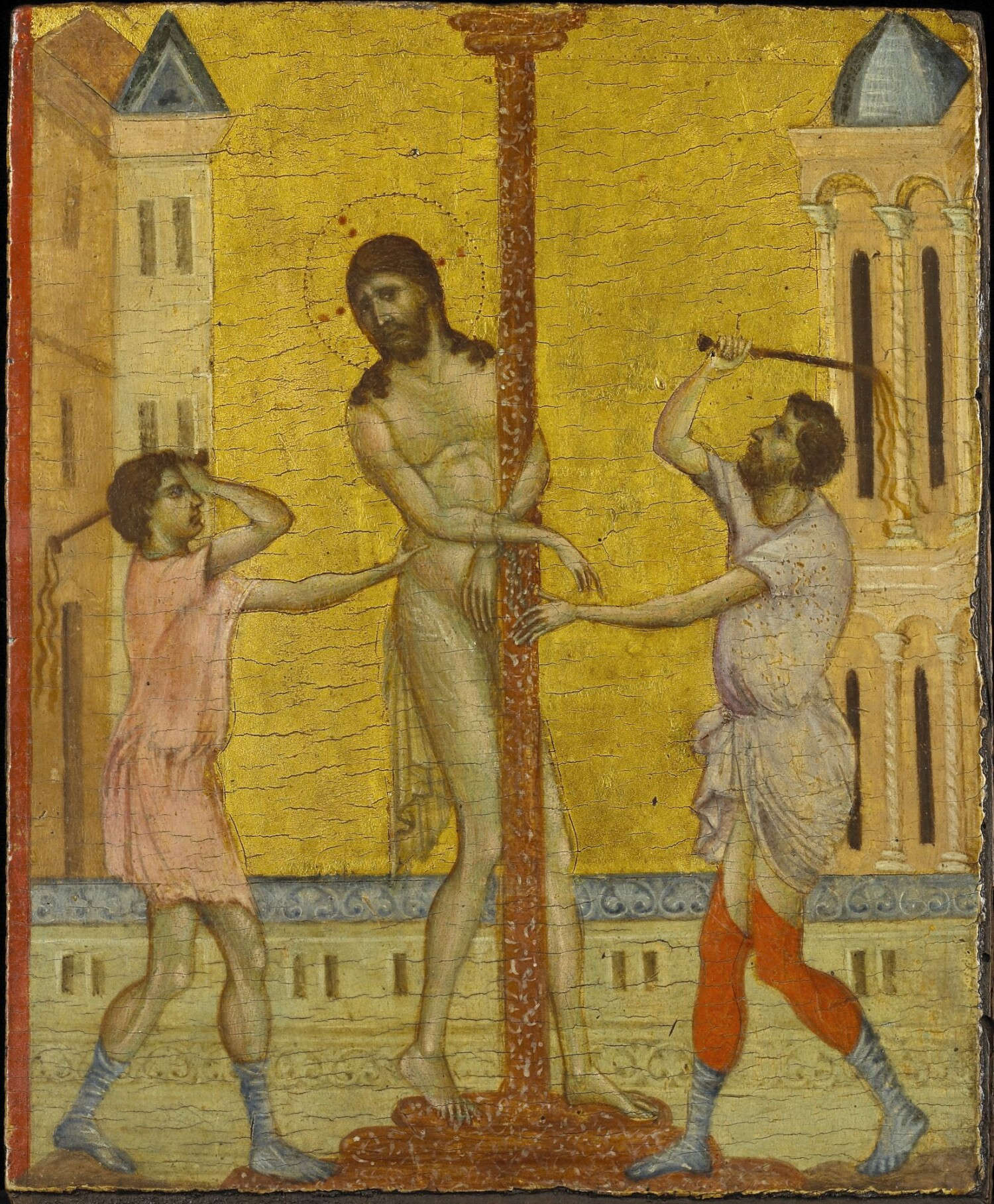
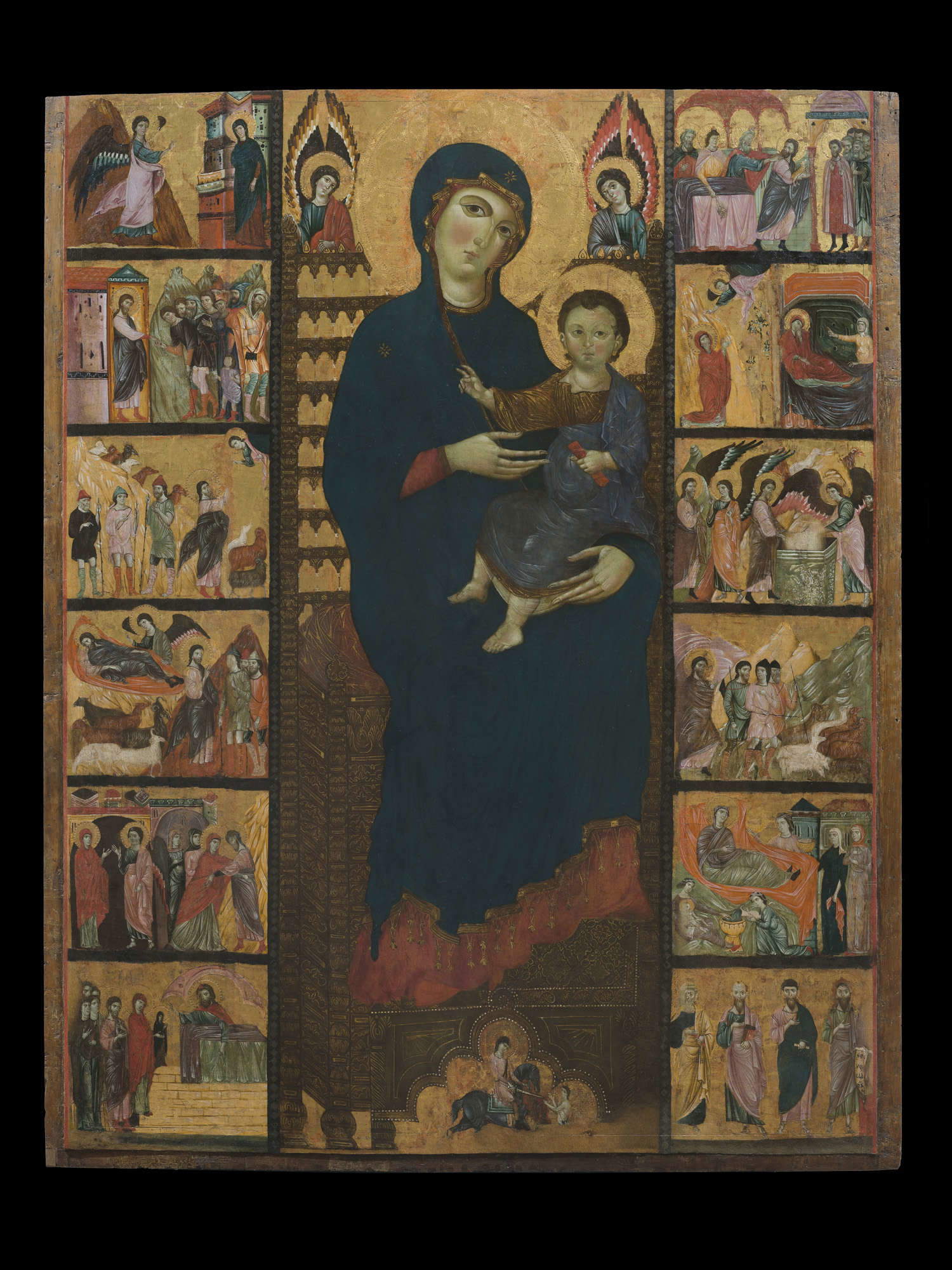
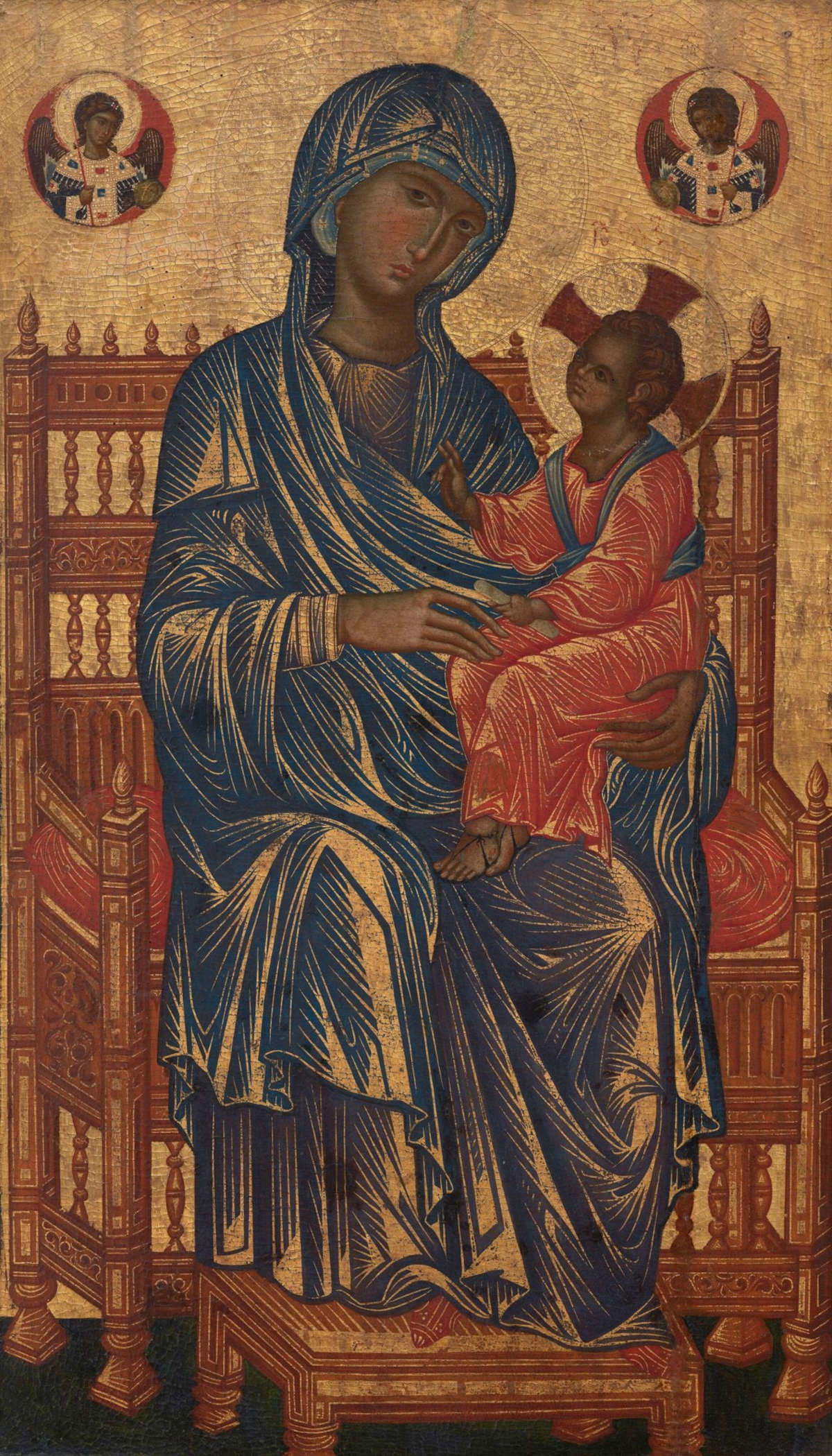
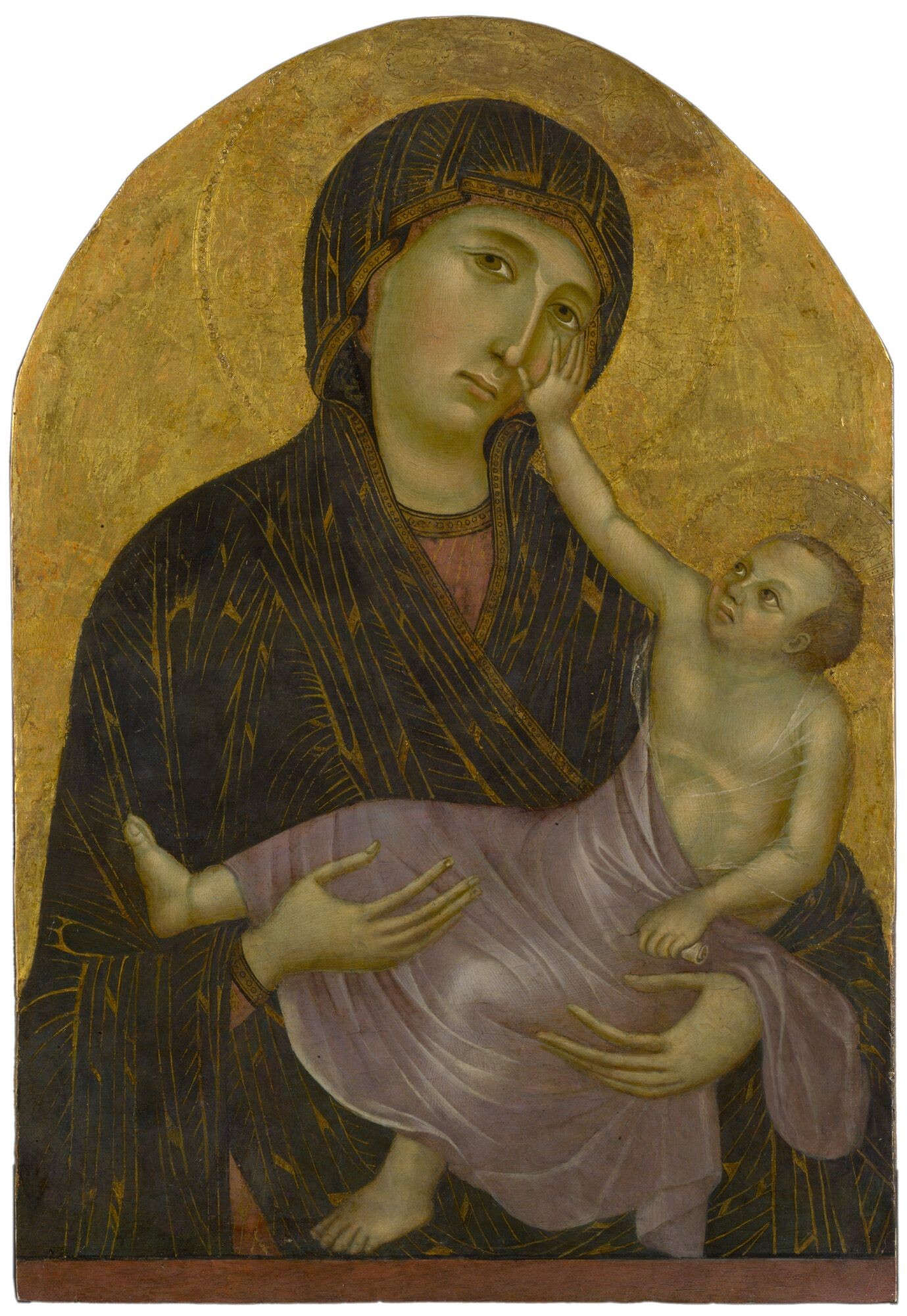

Another highlight of the exhibition is Cimabue’s diptych, of which the Louvre brings together for the first time three panels, the only known ones preserved at the National Gallery in London and the Frick Collection in New York. The Mockery of Christ is distinguished by its lively narrative and depiction of contemporary dress, reflecting the influence of Franciscan thought, which promoted a spirituality closer to everyday life. The work anticipates Duccio’s Majesty and represents an important junction in the history of Gothic painting. The exhibition closes with an extraordinary testimony to the artistic continuity between Cimabue and Giotto: the large panel Saint Francis Receives the Stigmata. This painting, created by the young Giotto for the same church that housed the Majesty, shows how Cimabue’s legacy was taken up and developed by his disciple, who would carry on the renewal of Italian painting.
By the time of Cimabue’s death in 1302, the baton of change had already passed to Giotto and Duccio, who would definitively set the course of Western art. However, this exhibition at the Louvre aims to restore to the figure of Cimabue the place he deserves: that of a pioneer, an innovator capable of rewriting the rules of painting and inaugurating a new visual era.
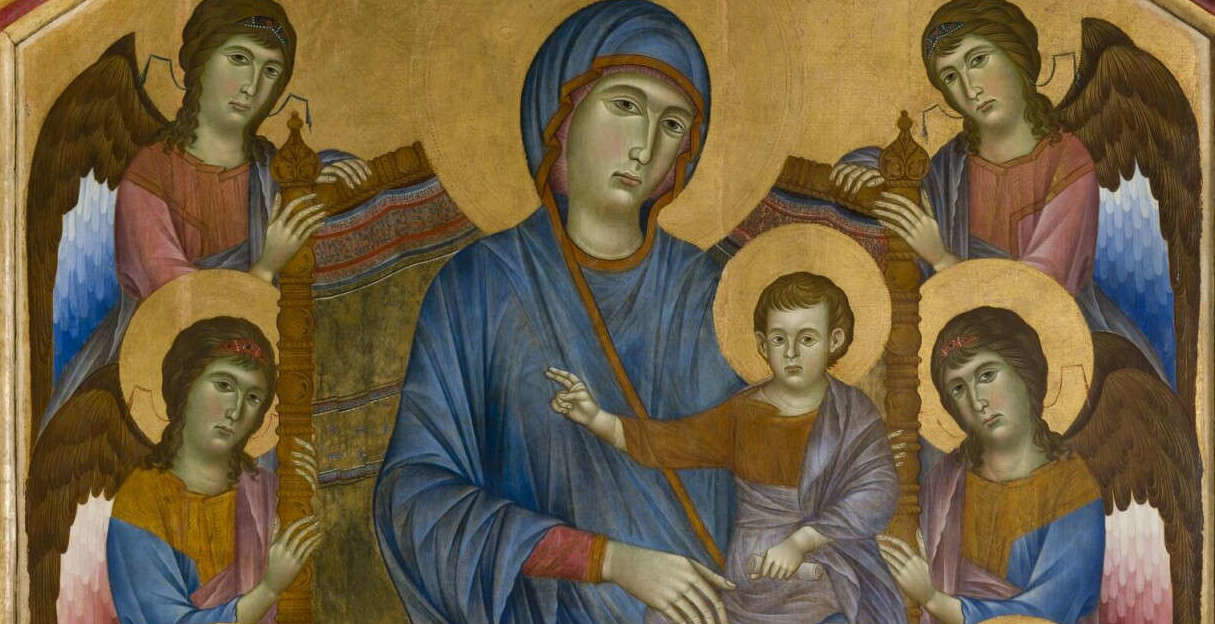 |
| Louvre holds major exhibition on Cimabue with many masterpieces |
Warning: the translation into English of the original Italian article was created using automatic tools. We undertake to review all articles, but we do not guarantee the total absence of inaccuracies in the translation due to the program. You can find the original by clicking on the ITA button. If you find any mistake,please contact us.





